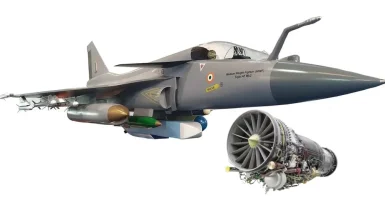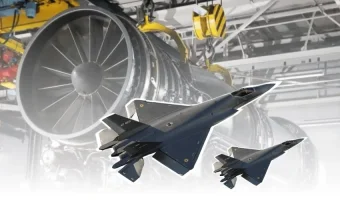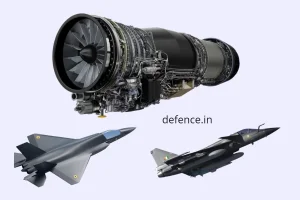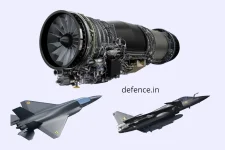- Views: 4K
- Replies: 32
The United States has indicated it will block the sale of the General Electric F414-GE-39E engine to Colombia's air force, the Fuerza Aeroespacial Colombiana (FAC). This engine is a crucial part of the Saab Gripen E fighter jet, which Colombia was considering purchasing.
This decision, apparently made to encourage Colombia to buy American-made Lockheed Martin F-16s instead, has wider implications, especially for India's Tejas Mk2 fighter jet program, which uses a variant of the same engine.
Because the US holds significant control over the export of its technology, this action raises questions about the future of India's plans to sell the Tejas Mk2 internationally, particularly to countries that are either aligned with or in competition with American interests.
The F414-GE-39E engine, a modified version of the widely used F414 series, is used in the Gripen E, a light, multi-role fighter aircraft made by Saab in Sweden. Colombia had been looking at the Gripen E to replace its older aircraft.
However, the US veto effectively eliminates this possibility by preventing access to the engine. This is viewed as a strategic move by the US, using its control over vital aerospace components to promote the sale of its own aircraft.
The F414 engine's adaptability and performance have made it essential to many fighter jet programs globally. This includes India's Tejas Mk2, an improved version of the domestically produced Light Combat Aircraft (LCA) developed by Hindustan Aeronautics Limited (HAL).
The Indian version, called the F414-INS6, is planned to power both the Tejas Mk2 and the first models of the Advanced Medium Combat Aircraft (AMCA). Production is planned to take place in India under a technology transfer agreement with General Electric (GE), with 80 percent of the technology being transferred.
The US's decision to stop the engine sale to Colombia has caused concern in India. Indian defence officials are looking at potential export markets for the Tejas Mk2 to support India's defence industry and increase its geopolitical influence.
The Tejas Mk2 is designed to be a cost-effective, single-engine aircraft with advanced avionics and the ability to perform multiple roles. It is being promoted as a strong competitor to aircraft like the Gripen, F-16, and France's Rafale.
Potential buyers include countries in Southeast Asia, Africa, and Latin America, many of which have friendly relations with the US. However, the situation with Colombia suggests that the US might use its control over the F414 engine to limit India's export opportunities, especially where American companies like Lockheed Martin or Boeing are also competing for contracts.
India's agreement with GE, completed in 2023 after lengthy negotiations, allows HAL to co-produce the F414-INS6 with substantial local involvement. This deal was celebrated as a significant step in US-India defence relations.
Despite this, the agreement is still governed by US export controls under the International Traffic in Arms Regulations (ITAR). This means that Washington has the final say on where the engines, and therefore the Tejas Mk2, can be sold.
The veto on the sale to Colombia demonstrates this power: by denying the F414-GE-39E to Saab, the US has effectively removed a European competitor to favor its own F-16. This leads to a crucial question: could the US place similar limitations on India if the Tejas Mk2 starts competing with American fighter jets in the export market?
The situation is significant for India. The Tejas Mk2, which is expected to be in service by the late 2020s, is a major upgrade from the Mk1. It offers improved payload, range, and combat abilities, making it attractive to countries looking for advanced but affordable fighter jets.
HAL has secured orders for over 100 units domestically, and with increased production capacity, exporting the aircraft is a logical next step. However, the US's power to veto the use of the F414 engine adds uncertainty.
Countries that are allies of the US, or those already using US-made aircraft, might be pressured to avoid the Tejas Mk2 to maintain good relations or avoid a potential engine embargo. Similarly, in direct competitions with American jets, the US could use its ITAR authority to influence the outcome.
This concern is not merely theoretical. Discussions on social media platforms like X (formerly Twitter) have highlighted the potential for the Colombia veto to affect not only the Gripen E but also other aircraft using the F414 engine, like the Tejas Mk2.
While the US has approved the co-production of the engine in India, indicating growing trust, its willingness to allow exports to other countries remains unknown.
Historically, the US has sometimes blocked technology transfers to safeguard its strategic and commercial interests, as seen in past restrictions on allies like Turkey, following its purchase of Russian arms systems.
The US Arms Export Control Act, of which ITAR is a part, gives the US government broad authority to control the export of defence articles and services.




